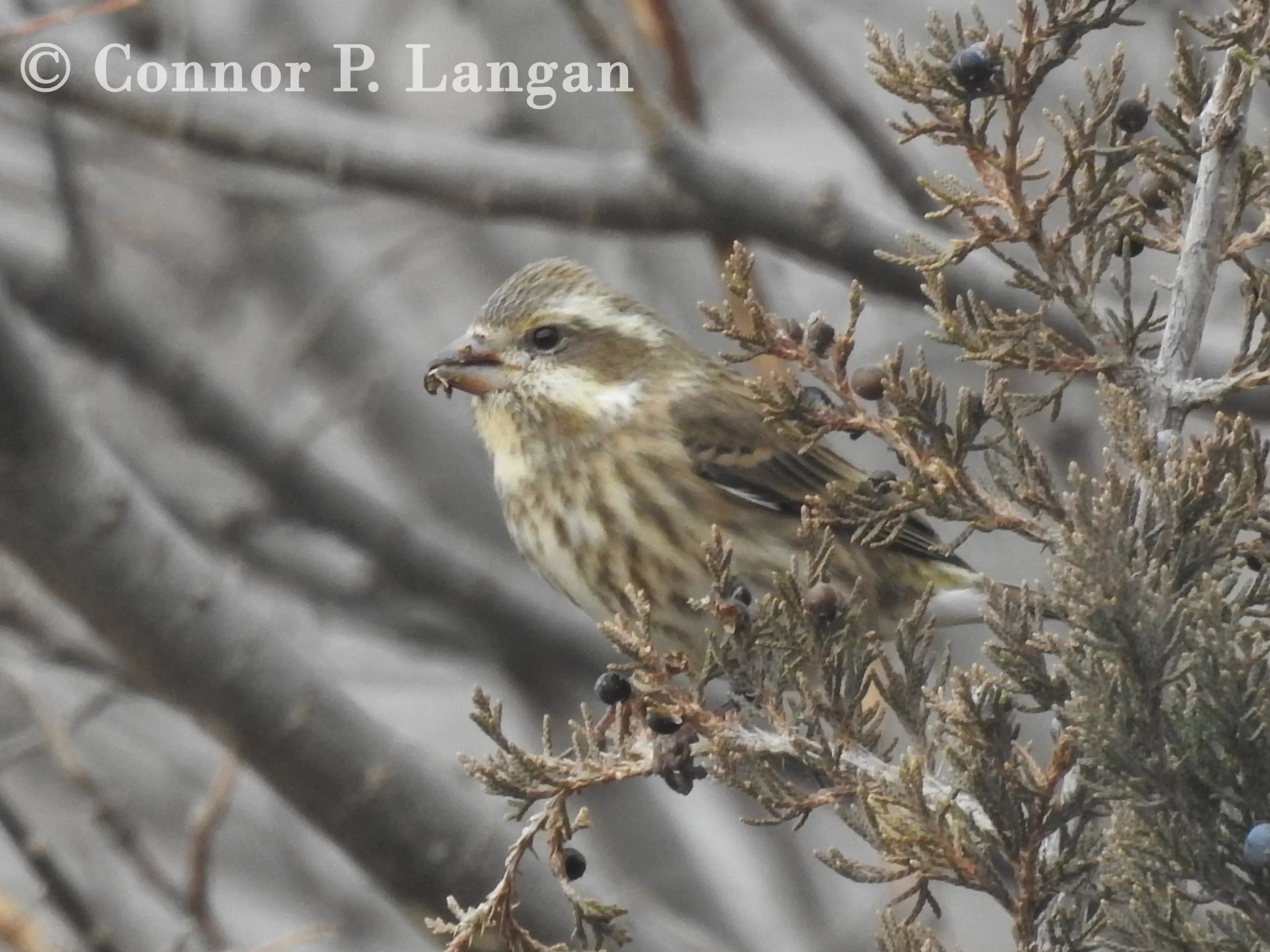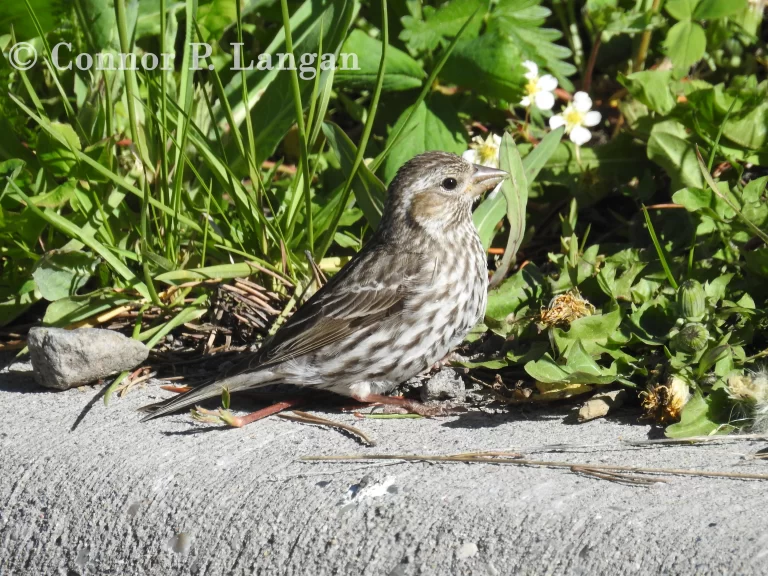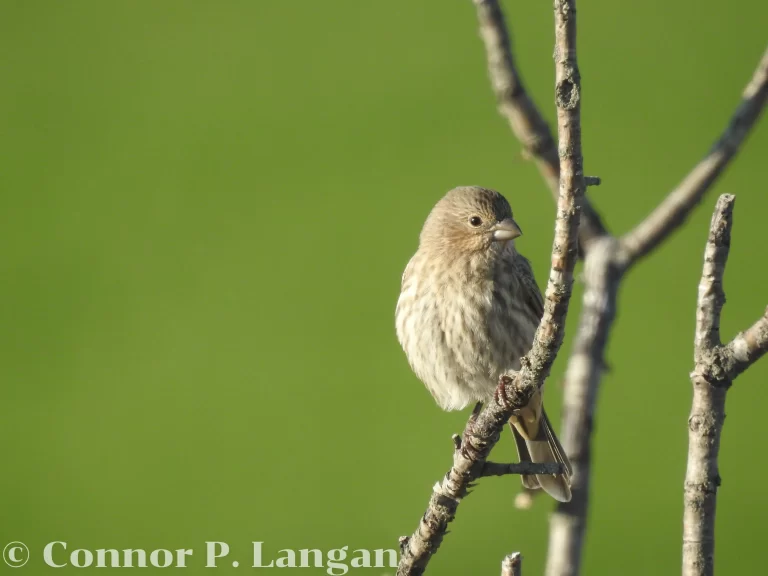Description
Purple Finches have large, substantial beaks, short, notched tails, and a chunky profile.
These finches are between 4.7 to 6.3 inches long, while they weigh 0.6 ounces up to just over 1 ounce.
This species is not purple, with males instead having a rosy red coloration.
The heads of Eastern subspecies males are a deep pink-red color, while they have a light red coloration to their chests and plain undersides. Eastern males have backs that are a combination of rosy red with black scallops, while wings and tails are black.
Eastern females have distinct pale supercilia, brown crowns, and pale undersides with brown streaking. Female Eastern Purple Finches have brown backs.
Immature Eastern Purple Finches look much like females.
Western Purple Finch males have a much more intense rosy red color profile than Eastern males. The heads of Western males are a deep pinkish color, while their undersides and backs are a red-brown color.
Female Western Purple Finches look similar to Eastern females, but their streaks are not as apparent as those of Eastern females. Western females have supercilia that are not as bold as those of Eastern females, while Western females tend to be a lighter brown color.
Immature Western Purple Finches look similar to adult females.
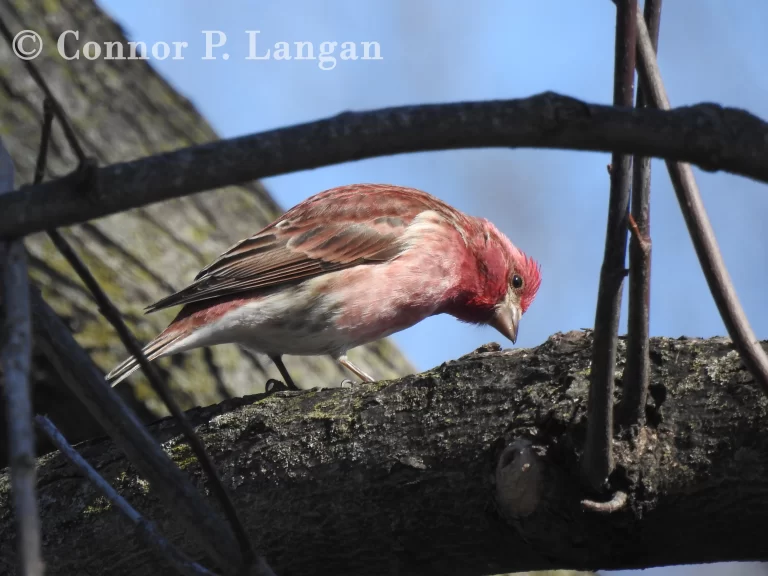
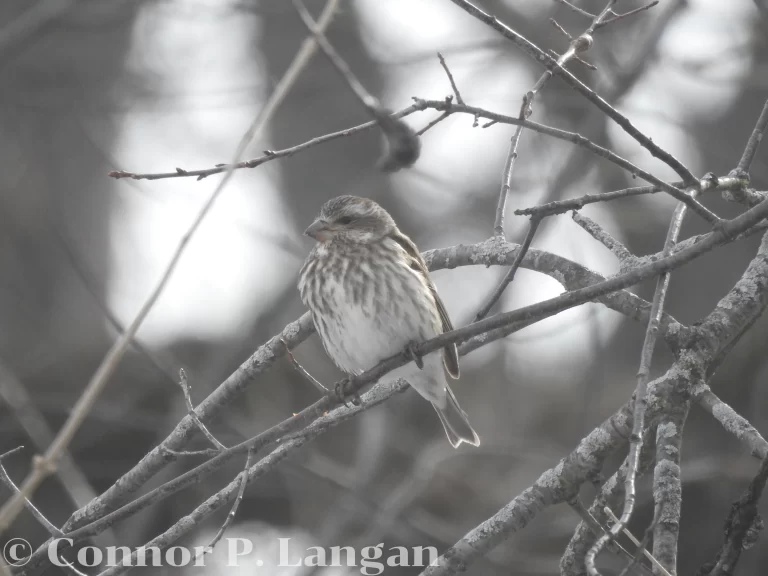
Behavior
Purple Finches tend to be shy at bird feeders, but in the absence of human presence, these birds can be aggressive in their defense of food sources, defending food from other Purple Finches and different species as well. Female Purple Finches tend to be more dominant than males at food sources.
Purple Finches are social, congregating into small-to-medium-sized flocks during the nonbreeding season.
Diet
These finches have a varied diet consisting of buds, seeds, fruits, and insects. They will visit backyard bird feeders and consume an assortment of seeds.
Habitat
Purple Finches survive in coniferous forests during the summer months, but they may also subsist in parks and suburbs during the breeding season.
These birds are found in a wider variety of habitats during the winter than summer, being located in early successional habitats, fallow fields, forests, parks, and other places with ample food.
Range
Eastern Purple Finches are year-round residents in the Upper Midwest and Northeastern United States. Some Eastern Purple Finches travel to the boreal forests of central and eastern Canada during the summer, while they can be found anywhere east of the Great Plains during winter.
Western Purple Finches have a more restricted range, with many birds living year-round along the Pacific Coast of the United States. Some birds travel to western Canada to breed in the summer. Western Purple Finches winter in Arizona in decent numbers.
Breeding
Purple Finches are monogamous by nature, as males display to females by puffing up and fluffing their feathers in an effort to initiate a pair bond.
Females typically construct nests without help from males, though males may deliver nesting materials. Nests are usually placed on a horizontal limb in a coniferous tree, but this species may construct a nest in a deciduous tree in the southern extent of its breeding range.
It takes a female 3 to 8 days to build a nest. The cup-shaped nests are made of twigs, grasses, and plant fibers. The female lines the nests with animal hair, feathers, and soft plant fibers.
Female Purple Finches produce 1 to 2 broods of young each year, with each clutch containing 2 to 7 eggs. It takes just shy of 12 to 13 days for eggs to hatch, while nestlings venture out on their own 13 to 16 days later.
Backyard Birding
Purple Finches will readily visit backyard bird feeders where they will eat a variety of seeds.
This species will not nest in a birdhouse, but they could construct a nest in a conifer within a backyard.
Population Status
Purple Finch numbers have declined by about 32% in the past half-century, with a global population of 6.5 million existing today.

